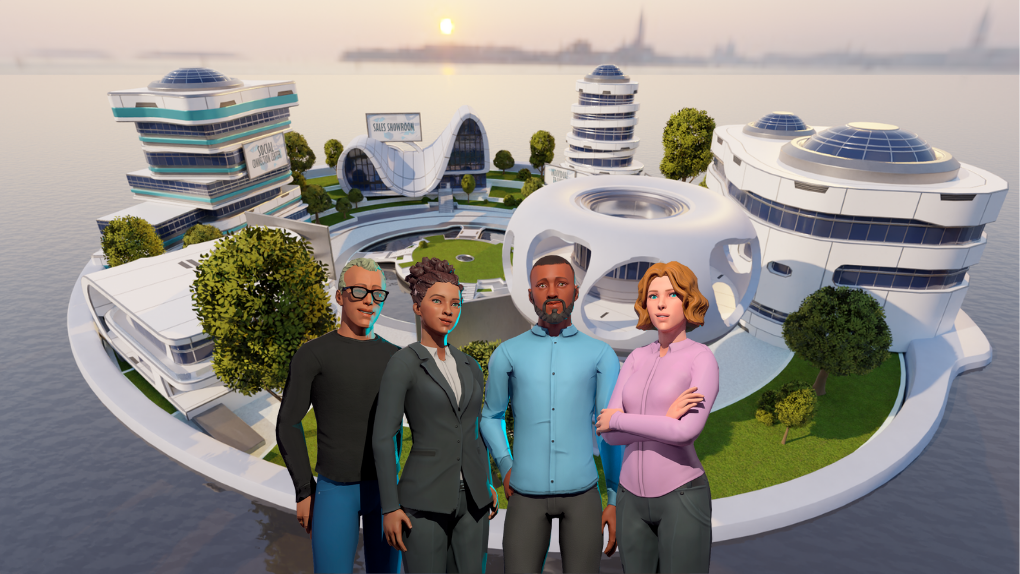In the ever-evolving landscape of emerging technology, the merging of artificial intelligence (AI) and the metaverse has started a shift that will without a doubt reshape the way we perceive and interact in the virtual world.
Use the AI Metaverse Glossary to serve as a compass to navigate this transformative realm and discover terms that define these two groundbreaking technologies.
If you’re new here, perhaps you’d like to start with our general Metaverse Glossary.
Table of Contents
1. Artificial Intelligence (AI)
AI refers to the development and use of algorithms, programs, and systems that enable computers to perform tasks that would typically require human intelligence. It involves learning, reasoning, and self-correction, and it can replicate skills such as pattern recognition, decision-making, and continuous improvement.
2. AI Learning
The ability of AI to recognize patterns or relationships in data, enabling it to acquire knowledge and improve its performance over time. For example, an AI might learn to distinguish objects in images.
3. AI Reasoning
The capacity of AI to make informed decisions or predictions based on data. This is used in applications like chatbots providing answers or email filters identifying spam.
4. Self-correction
The capability of AI to continuously enhance its performance by learning from past mistakes or undesirable outcomes. It improves over time through a feedback loop, aiming for higher accuracy.
5. Artificial General Intelligence (AGI)
A form of AI that is highly advanced and capable of performing any intellectual task that a human can. AGI possesses a broad range of cognitive abilities and is often seen as a goal for AI research.
6. Metaverse
The metaverse is an expansive virtual space that links the physical and digital worlds. It enables interactions, transactions, and experiences across various technologies like XR, blockchain, 5G, and AI. Learn more about Metaverse Terms.
7. Machine Learning (ML)
A subset of AI that involves training computers to learn from data and improve their performance on specific tasks. It includes techniques like supervised, unsupervised, and reinforcement learning.
8. Supervised Learning
A machine learning approach where AI is trained on labeled data to predict outcomes for new data. It’s used in tasks like forecasting metaverse platform usage based on historical data.
9. Unsupervised Learning
A machine learning method where AI clusters data into categories without pre-existing labels. It can identify patterns or relationships within data, even if the AI doesn’t fully understand the context.
10. Reinforcement Learning
An AI learning technique that involves trial and error. The AI learns from rewards and penalties, making decisions that maximize rewards over time. It’s used in scenarios like training AI to navigate VR environments.
11. Deep Learning
A subcategory of machine learning that uses artificial neural networks to process data, inspired by the human brain’s neural structure. Deep learning is responsible for creating sophisticated AI models capable of human-like tasks.
12. Natural Language Processing (NLP)
The AI field that enables computers to understand, interpret, and respond to human language. It powers chatbots, virtual assistants, language translation, and other forms of human-computer interaction.
13. Speech Recognition
AI’s ability to convert spoken language into text, enabling machines to understand and process human speech. It’s used for applications like voice commands in the metaverse.
14. Computer Vision
The branch of AI that allows machines to interpret visual information from images, videos, or live camera feeds. Computer vision enables object recognition, scene understanding, and 3D environment creation.
15. AI Planning
An AI technique that finds optimal solutions to complex problems by identifying the best sequence of actions to achieve a desired goal. It’s used in tasks like optimizing delivery routes or managing computing resources for metaverse experiences.
16. Edge Computing
A decentralized computing model that processes data closer to its source, reducing network latency and improving privacy. Edge computing enhances the performance of data-intensive tasks in the metaverse.
17. Smart Cameras
Cameras equipped with AI that can transmit real-time data over networks, enabling real-world objects, people, and places to interact with the metaverse.
18. Artificial Intelligence of Things (AIoT
The integration of AI and the Internet of Things (IoT) devices, allowing physical and digital realms to interact and communicate in more complex ways.
19. Deep Learning
A subcategory of machine learning that employs artificial neural networks to process data and make complex decisions. Deep learning is used to develop highly advanced AI models capable of human-like tasks.
20. Smart Avatars
Virtual representations of users in the metaverse that are enhanced by AI to exhibit lifelike qualities, enabling more natural and intuitive interactions with others.
21. AI Virtual Assistants
AI-powered programs that assist users by answering questions, performing tasks, and engaging in conversations in the metaverse.
22. AI-Generated Art
Pieces of art created by AI algorithms using existing data and patterns. AI-generated art can be used to enhance metaverse environments and experiences.
23. AI-Powered Blockchain
The application of AI to enhance security, automation, and efficiency in blockchain transactions, enabling secure and efficient smart contract execution.
24. AI-Powered Smart Cities
The integration of AI, 5G, and other technologies into physical environments to create interconnected and responsive cities where virtual experiences and real-world interactions coexist.
25. AI-Powered Metaverse
The fusion of AI technologies with XR, blockchain, 5G, and other innovations to create a dynamic and immersive virtual world where users can interact, transact, and explore with unprecedented possibilities.
26. Spatial Computing
A concept that involves understanding and interacting with the physical world and digital information in a unified space, enhancing immersive experiences. Read more about Spatial Computing.
27. Haptic Feedback
Technology that provides tactile sensations to users, enhancing immersion by simulating touch and interaction with virtual objects.
28. Holography
The technique of creating three-dimensional images using light, often used in the metaverse to enhance visual experiences.
29. Embodied AI
AI systems that have a physical presence and can interact with the environment in the metaverse, often through robotic bodies or virtual avatars.
30. Emotion AI
AI that can detect, understand, and respond to human emotions, enhancing realistic interactions and emotional engagement in the metaverse.
31. Quantum Computing
Advanced computing technology that leverages quantum mechanics, with potential applications in solving complex problems and simulations in the metaverse.







